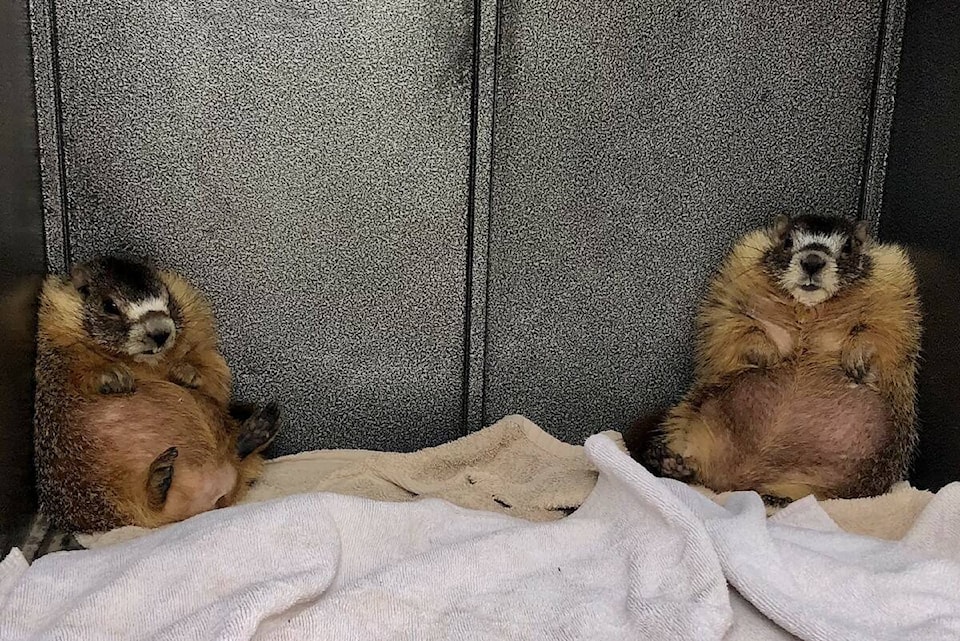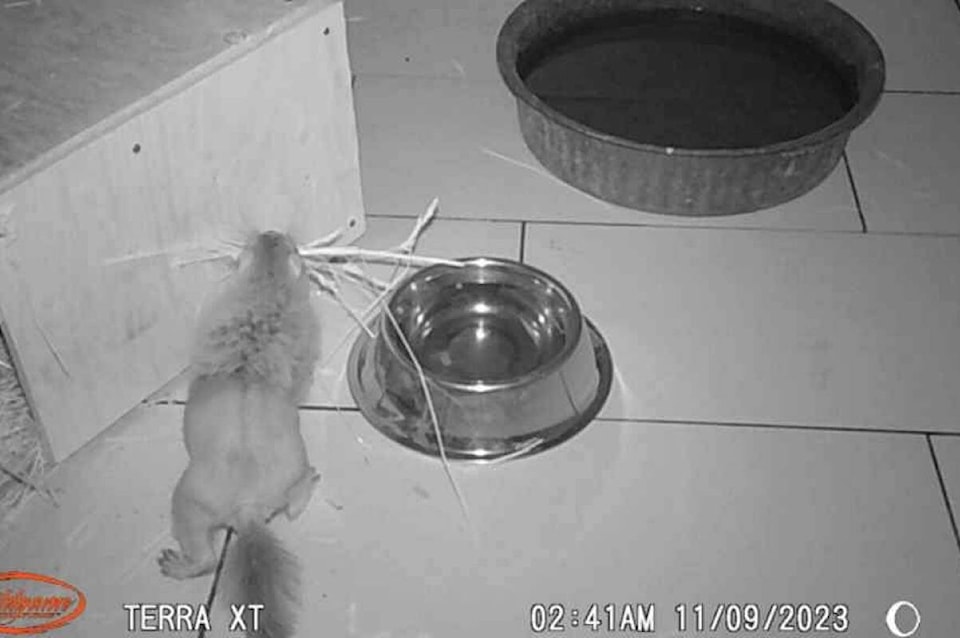A trio of marmots have nestled in for a long winters nap at the Interior Wildlife Rehabilitation Society (IWRS) in Summerland.
Eva Hartmann, the founder of the non-profit organization spoke with Capital News about the IWRS’ current snuggliest patients.

The three sisters were brought to IWRS after they had been abducted and illegally kept in captivity.
When they were handed over to Hartmann, the critters were “not in the best condition,” and were unfortunately not suitable for release. Marmots typically hibernate from September until May depending on the climate. In order to last the approximately eight months of ultra deep slumber, the rodents need to fatten up big time.
Unfortunately, the three marmots were not chubby enough and were brought to IWRS too late in the year to hibernate outdoors.
Hartmann set up an isolation room at the rehabilitation centre as a hibernation station to help the little ladies get through the winter. The cool temperature-controlled room has been outfitted with a nesting box, hay and water– in case they get thirsty.
Typically, a healthy marmot will not wake up during their hibernation and will stay snuggled until the spring. However, one of the marmots at IWRS was in particularly poor condition headed into the fall. The little critter has woken up a few times since September for a quick drink of water. On its way back to bed the little lady grabs some hay to tuck herself back in.

Hartmann said that the other two are hibernating peacefully.
During a proper hibernation, marmots will decrease their heart rate and their respiratory rate, sometimes breathing only once per minute.
Hartmann and the volunteers at IWRS are able to monitor the little lady from a motion-sensor camera. The organization is currently fundraising and looking for sponsors to fund a live web cam. When installed, the streaming service will allow the public to check on the critters at IWRS at any time.
The winter is the wildlife society’s slow season but Hartmann expects an influx of baby animals in need of care in the spring. People will be able to watch baby birds and beavers play in wildlife centre’s ponds through the web cams.
IWRS specializes in water birds and water mammals but work to accommodate the needs of other critters in crisis, like the marmots.
Members of the public are not able to visit the wildlife centre and are encouraged to call one of the clinic’s veterinary partners to arrange a drop-off. To contact the organization email info@interiorwildlife.ca.
The IWRS facility is the only government-licensed organization that is able to care for mammals and birds in the region. However, the organization is not government funded and run exclusively on volunteers and donations. To learn more and to donate visit interiorwildlife.ca.
READ MORE: Downtown Kelowna resident beaver treated for tail infection, given snacks after procedure